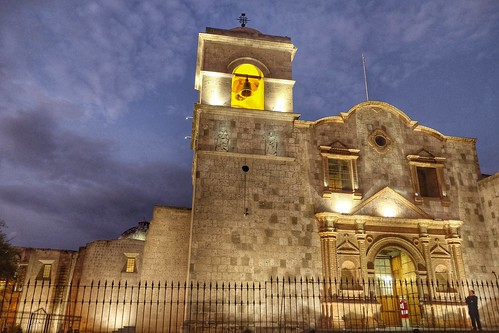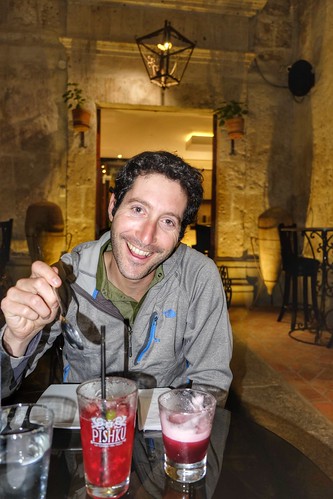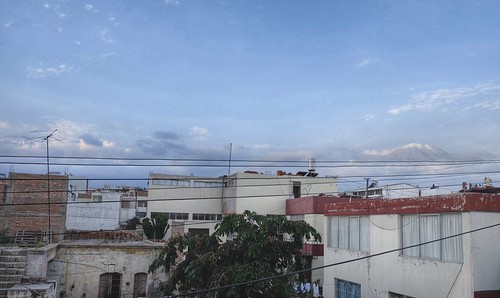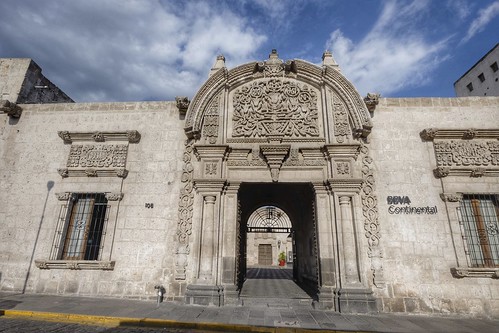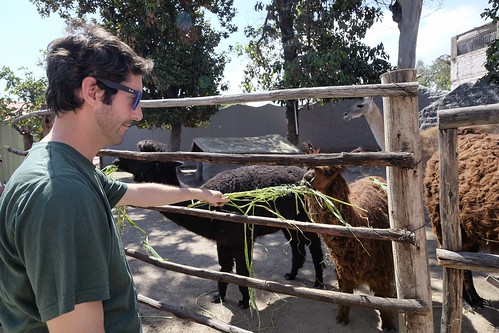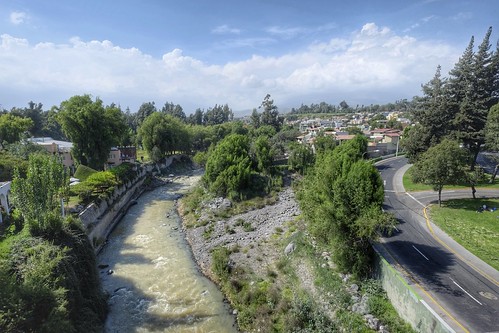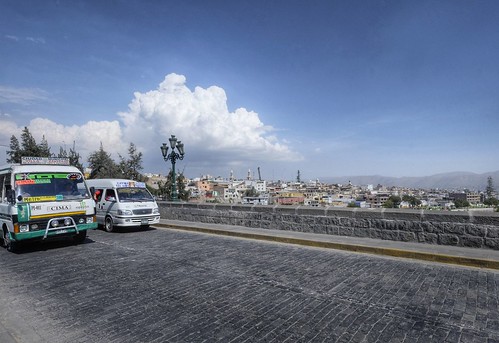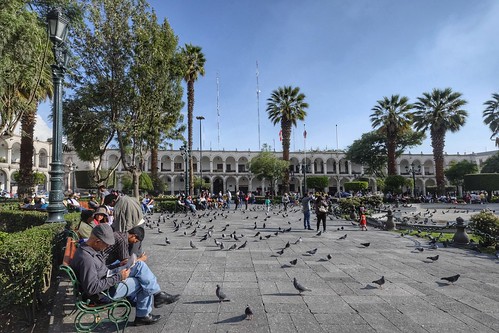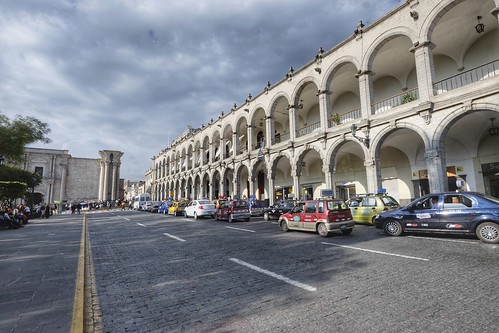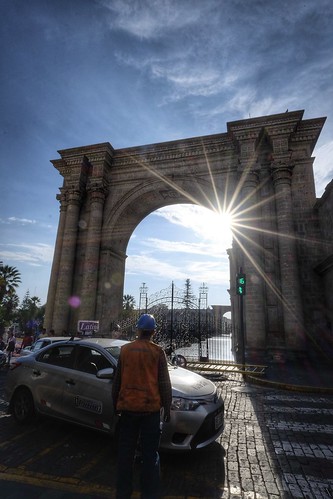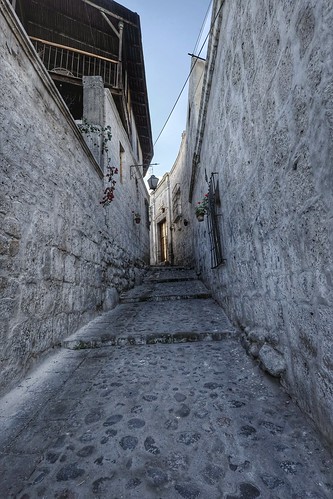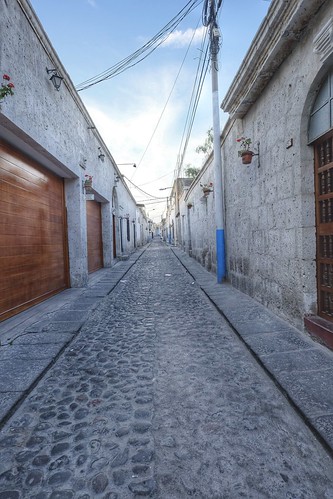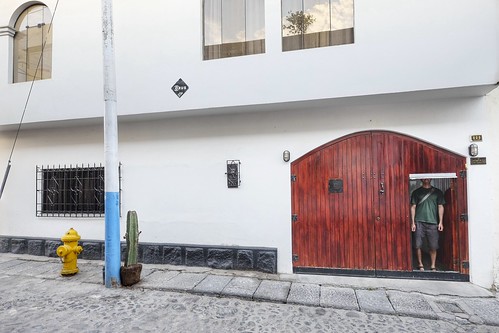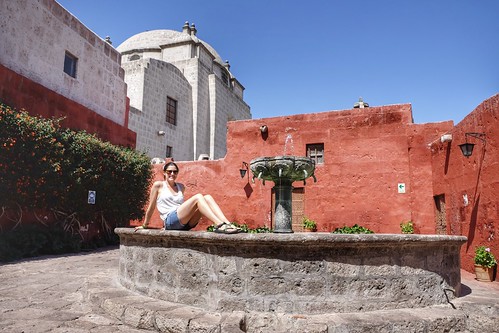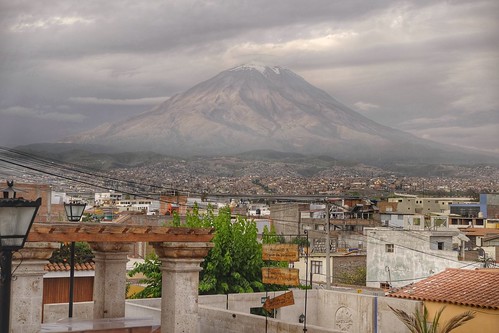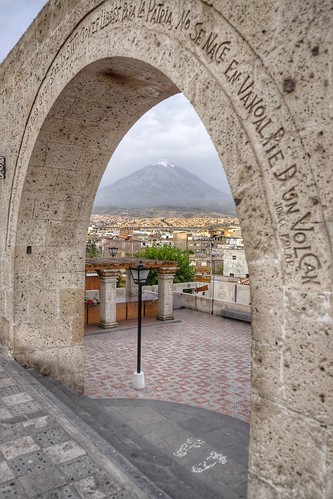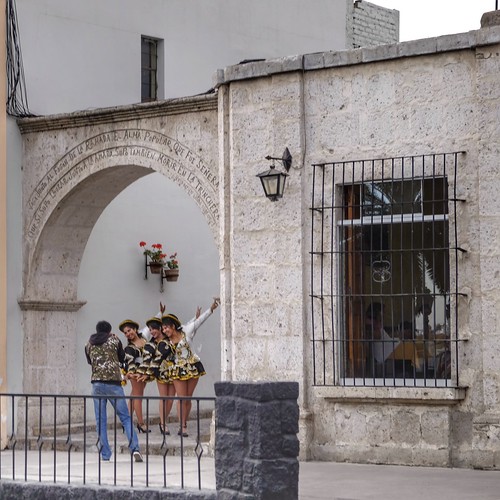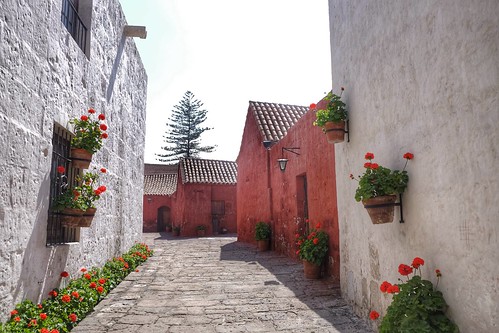* We visited Arequipa April 13-15, 2015 and again April 19-20, 2015
We arrived in sunny Arequipa after a long day of border crossing and busing which started before sunrise in Northern Chile, left us waiting for an unusually long time in the border town of Tacna, Peru for a bus, and finally dropped us in Arequipa, Peru just in time to get settled before sunset. We were pleasantly surprised to find our adorable guest house tucked away behind big wooden doors on a narrow, cobblestone colonial street in a neighborhood just across the river from old town. Ana, the guest house owner, greeted us with a warm smile and made us feel extremely welcome. Our room felt like a room at a 4 star boutique hotel, but we definitely didn’t pay 4 star prices. We had direct access to a roof top patio overlooking Volcano Misti in the distance, the river snaking through the city below, and even some green park areas. What a breath of fresh air! We had been in the desert for the last week or so, with some down time the last few days. So we were energized and ready to explore Arequipa. We set out for a walk to old town during sunset our first night. We were surprised to find a hip Peruvian town with a happening restaurant scene, beautiful white stone buildings, and a feeling of safety that we hadn’t felt last time we were in Peru, in Chiclayo, a month and a half before. We went straight to happy hour at Casa de Pisco to toast with Pisco Sours and a delicious ceviche (I guess I officially graduated from vegetarian to picky pescatarian). After 5 months of traveling in South America we had made it to the last country on our list, and we were only a few weeks away from hiking the Inca Trail to Machu Piccu.
Highlights…
- We took the free Arequipa walking tour (we had become regulars on the South America free walking tour circuit) to get some history on what is clearly a very well preserved Spanish colonial city. We learned that all of the buildings in old town are made of white rock from the same volcano. There is a well preserved old Plaza de Armas that looks very similar to the one we saw in Cuenca, Ecuador. Nearby we passed quite a few Franciscan monasteries, convents and churches from the same colonial era. The city grew around these grand buildings into European feeling neighborhoods, each centered around their own small plazas. The walking tour dragged on a bit, but did include a visit to an alpaca/llama wool museum where we got to see (and smell) the animals up close, as well as feed them. We debated sneaking off from the group at that point, but glad we stuck around because the tour ended with a free pisco tasting.
- Arequipa has a very foodie restaurant scene, which is pretty impressive for a small town. We didn’t splurge on any of the top rated gourmet spots, but we did find our go-to spot, El Cameroncito. We ate there twice, and loved their classic Peruvian corvina (a halibut-like fish found in South America) ceviche and fresh salads.
- Danny tried the local Arequipa street food specialty, anticuchos. What is an anticucho you may ask? How about some skewered grilled cow heart slices!
- We explored our neighborhood, with its cute cobblestone streets romantically lit with lantern-esque street lights at night. Danny walked all the way to the top of the hill above our neighborhood for sunset and got a clear view of the volcano in the distance, framed by an arch with a few lines of Spanish poetry. We returned to that hilltop for dinner another day and saw an elaborate Catholic wedding through the window by our table, through an open door in the church across the street.
- We wandered through the upscale neighborhood near our guest house and found a great supermarket. We bought some fresh produce and made ourselves a few good meals in Ana’s well stocked kitchen.
- We were pretty wowed by how wealthy and put together Arequipa felt. It was a drastic change from the busy, frenetic vibe we felt in northern Peru. Arequipa has well kept city parks and a virtually garbage-free river running through it. We felt safe walking around with our valuables and were even able to carry our camera at night, which we rarely do. Where were we?! There was one really busy boulevard we crossed often and we would see mini buses packed with passengers, with a person hanging out the door to literally pick up new passengers and throw them into the vehicle. When someone wanted to get out, it was like they slowed to a roll and the person somehow snuck out without the bus ever fully stopping. We would wait to cross that busy boulevard and look at each other and think, oh yeah, we really are in Peru.
- We returned to Arequipa for an extra day after a few days of hiking in Colca Canyon (that will be our next post) and were happy to be back in the comforts of Casa de Ana. We did a walking tour of the Santa Catalina Monastery, which is actually like a mini walled in city. Around 450 people (nuns and their servants) lived there in its heyday, but it was different from the usual monastery in the the 1600s, as the sisters came from mostly wealthy families and were allowed to have their own elaborate apartments within the convent walls. Most are very well preserved and the tour was like a walk back in time.
To see the full album of Arequipa photos click here.

